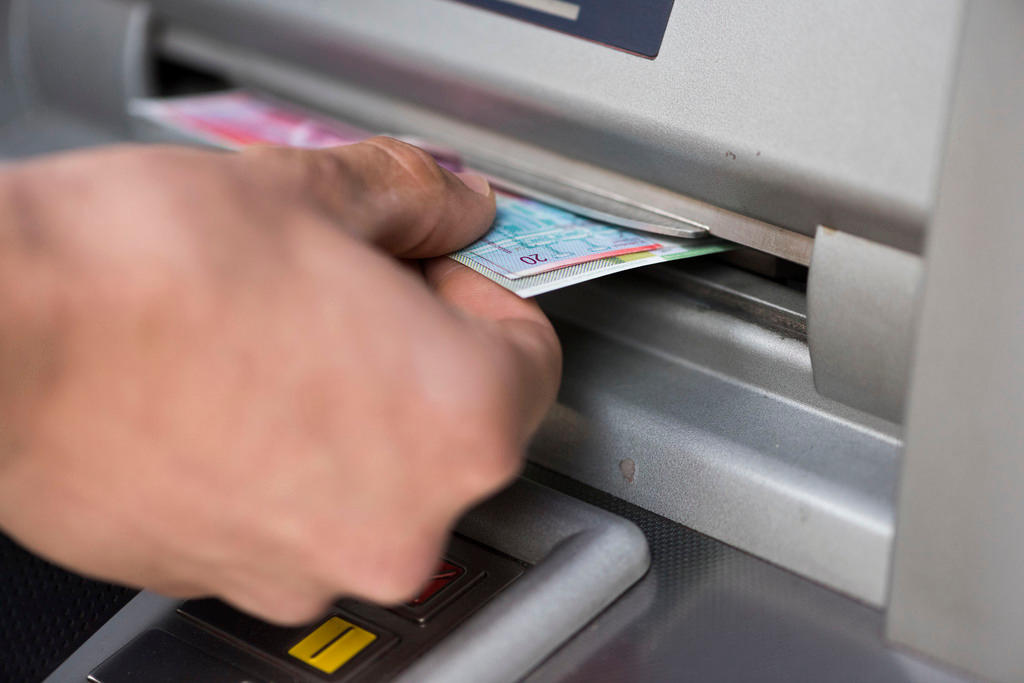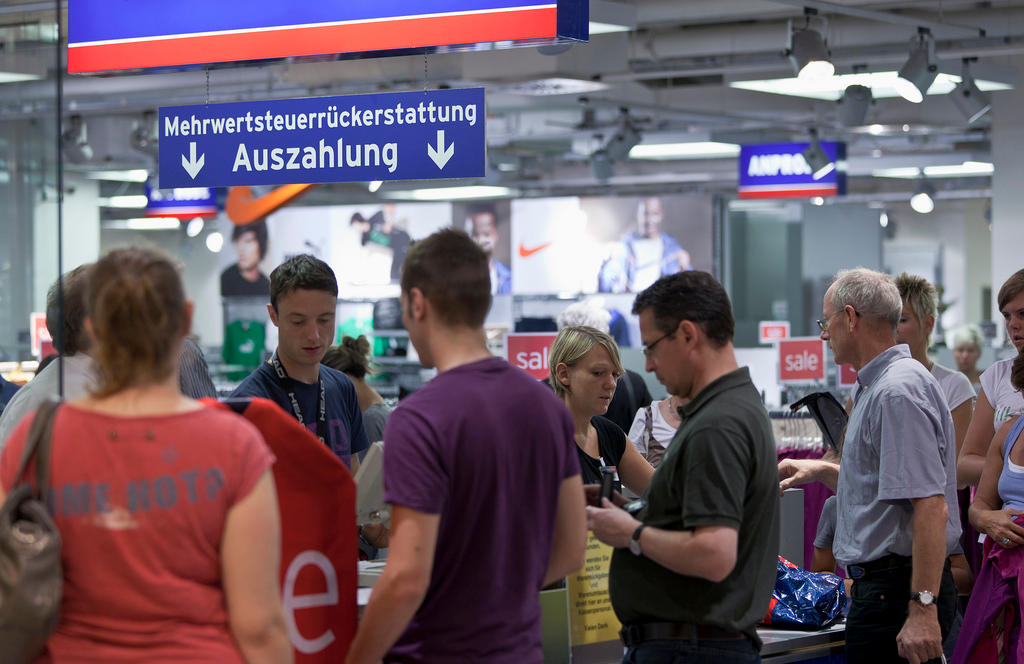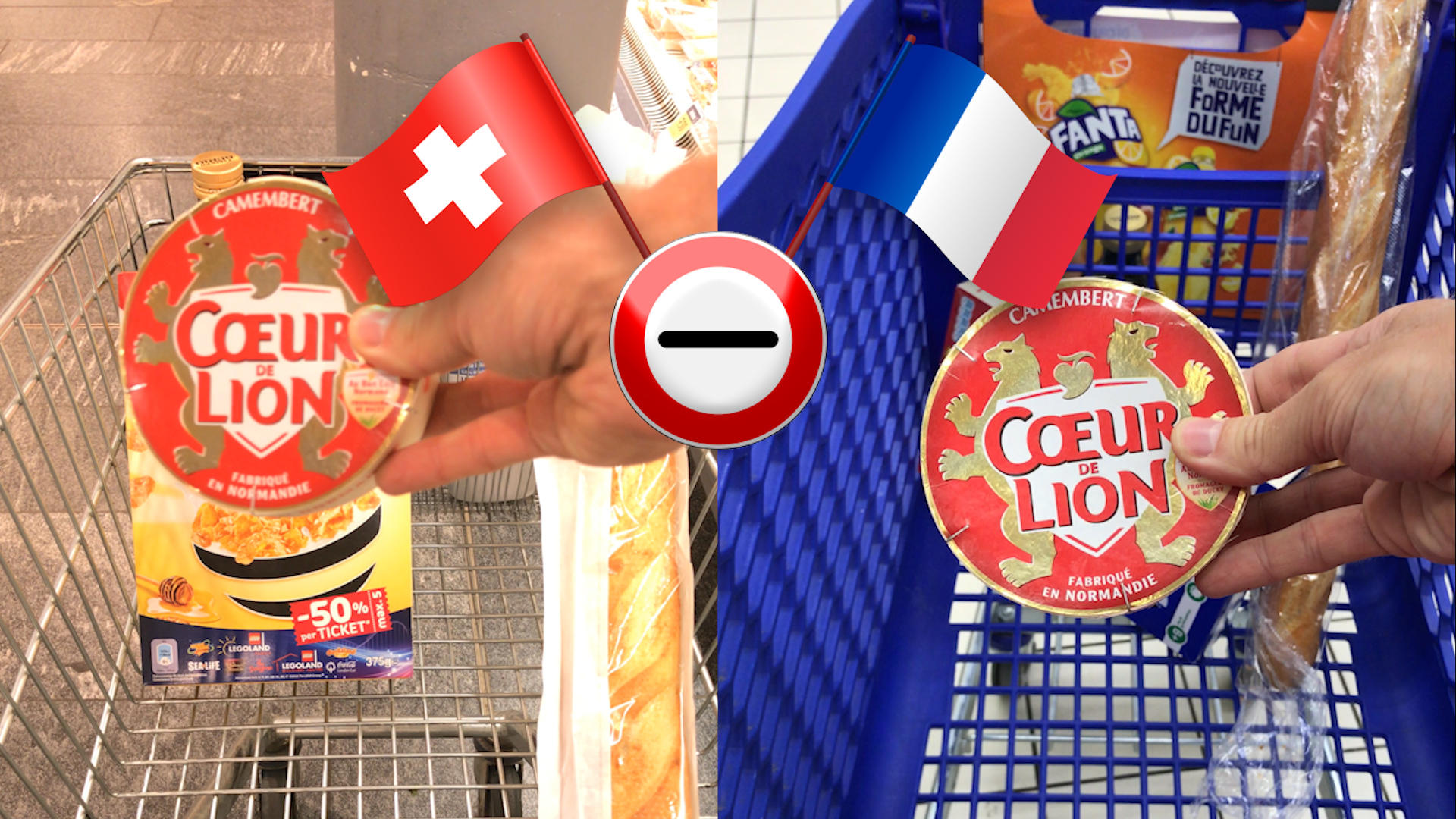Swiss banks benefit from exchange rates, study finds

A study of over 40 Swiss finance institutions has revealed ‘striking’ differences in exchange rates for banknotes and currencies as well as the addition of hefty mark-ups and fees.
Online banking and insurance comparison service moneyland.ch examined the exchange rates for euros, dollars, pounds, Swedish krona and Thai baht over the course of their six-day analysis, the results of which were released Wednesday.
The service found that the difference in mark-ups added to exchange rates could be up to three-fold between the most and least expensive banks. One of the more pricey institutions studied was the Swiss Federal RailwaysExternal link, while supermarket chain Coop’s deposit accountExternal link service was found to be most favourable for customers – at least for purchases of euros and dollars.
+ Here’s what the new CHF10 note will get you
+ Swiss franc weakens to symbolic low
Moneyland.ch explained that prices for either banknoteExternal link rates or currencyExternal link rates are charged, depending on the type of transaction: for example, withdrawals conducted at a bank teller window usually result in the more expensive banknote rate being applied. On the other hand, online transactions via a bank account usually use the currency exchange rate. Banks generally add bigger mark-ups to banknote rates than to currency rates.
For domestic cash machine withdrawals using a debit card, banknote rates are used. But for foreign cash machines, currency rates are almost always applied, meaning that withdrawing money abroad can be cheaper than the same transaction with your own bank, moneyland.ch added.
However, purchases of foreign currencies from one’s own bank generally do not involve additional costs. If you’re not a customer, a fee of CHF5 ($5.20) or CHF10 is usually collected. Additional charges may be added by foreign cash machines as well.
The study also included a calculation of the proportional difference between the buy and sell rate for banknotes, known as the exchange rate spread, which describes the cost of exchanging one currency for another and then immediately exchanging the second currency back to the original one using the same service. According to the calculation, a client loses an average of 5.16% for euros, and 15% for Thai bahts during these transactions – potentially up to 26% for bahts at a more expensive bank.
Currency rates, used in remote transactions, have a much smaller spread: 2.9% for the euro, 3.1% for the dollar, 3.2% for the pound, 3.5% for the krona and 5.1% for the baht.

In compliance with the JTI standards
More: SWI swissinfo.ch certified by the Journalism Trust Initiative



You can find an overview of ongoing debates with our journalists here. Please join us!
If you want to start a conversation about a topic raised in this article or want to report factual errors, email us at english@swissinfo.ch.